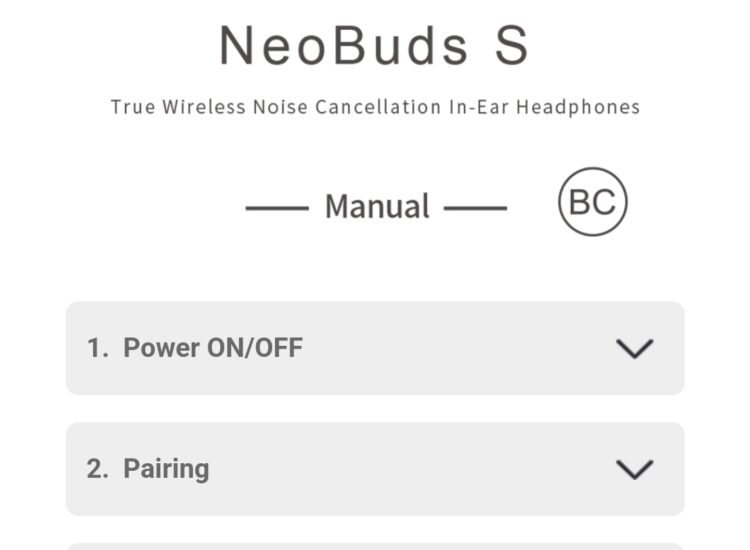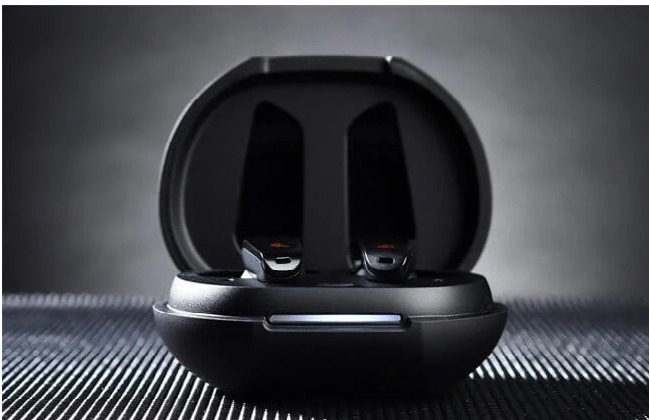AdBlock: Understanding Its Impact on Users, Publishers, and the Future of the Internet
The internet, as we know it, is largely supported by advertising. From news websites and blogs to social media platforms and streaming services, ads are a ubiquitous part of the online experience. However, the increasing intrusiveness and sheer volume of online advertisements have led to the rise of ad blocking software, with AdBlock being one of the most prominent players in this domain. This comprehensive article will delve into the intricacies of AdBlock, exploring its functionality, the benefits it offers to users, the challenges it poses to publishers, the technology behind it, and the broader ethical and economic implications for the future of the internet.
Toc

1. Introduction to Ad Blocking
Ad blocking has become a significant phenomenon in the digital landscape, driven by users seeking a cleaner, faster, and more private Browse experience. Understanding what ad blocking software is and why it has gained such traction is crucial to grasping its overall impact.
1.1. Defining Ad Blocking Software
Ad blocking software, at its core, is a type of application or browser extension designed to prevent advertisements from being displayed on web pages. These ads can take various forms, including banner ads, pop-up ads, video ads, and more. Ad blockers work by identifying and filtering out the code and content associated with these advertisements, resulting in a web page that loads without the visual clutter and potential interruptions caused by ads.
1.2. The Rise in Popularity of Ad Blockers
The popularity of ad blockers has grown significantly over the past decade. Several factors have contributed to this surge, including the increasing frequency and intrusiveness of online ads, concerns about privacy and security related to ad tracking, and the desire for faster page loading times and reduced data consumption, especially on mobile devices. As the online advertising ecosystem has become more sophisticated and pervasive, so too has the demand for tools that allow users to control their Browse experience.
1.3. AdBlock as a Leading Example
AdBlock, often referred to generically when discussing ad blocking software, is one of the most widely used browser extensions for blocking advertisements. Available for various web browsers such as Chrome, Safari, Firefox, and Edge, AdBlock has garnered millions of users worldwide. Its user-friendly interface and effective blocking capabilities have made it a go-to solution for individuals seeking to eliminate unwanted ads from their online Browse.
1.4. The Core Functionality of AdBlock
AdBlock works by employing a combination of filter lists and custom filters. These lists contain rules and patterns that identify the URLs, domains, and code associated with advertising content. When a user visits a website, AdBlock compares the website’s elements against these filter lists. If a match is found, AdBlock prevents that content (the ad) from being loaded and displayed on the page. Users can also create their own custom filters to block specific elements or websites that are not covered by the default filter lists.
2. The User Perspective: Benefits of Ad Blocking
For the millions of individuals who use AdBlock and similar tools, the benefits are numerous and often significantly enhance their online experience.

2.1. Enhanced Browse Experience
One of the primary reasons users install ad blockers is to achieve a cleaner and less cluttered Browse experience. Websites without ads are often easier to read and navigate, allowing users to focus on the content they are actually interested in. The removal of distracting banners, pop-ups, and auto-playing video ads can lead to a more enjoyable and efficient online session.
2.2. Improved Website Loading Speed
Advertisements, especially those with rich media content like images and videos, can significantly slow down the loading time of web pages. By blocking these ads, AdBlock can help websites load much faster. This is particularly beneficial for users with slower internet connections or those Browse on mobile devices where data speed can be a constraint. Faster loading times contribute to a more seamless and responsive online experience.
2.3. Reduced Data Consumption
Many online advertisements, particularly video ads and those that track user behavior, consume a significant amount of data. For users with limited data plans, especially on mobile, this can lead to exceeding their data allowance and incurring additional charges. AdBlock helps to reduce data consumption by preventing these data-heavy ads from loading, saving users money and ensuring they can stay within their data limits.
2.4. Increased Privacy and Security
Online advertisements are often associated with tracking technologies that monitor users’ Browse behavior across different websites. This data is then used to serve targeted ads, raising concerns about privacy. AdBlock can block many of these tracking scripts and third-party cookies associated with advertising networks, helping to enhance users’ online privacy and reduce the amount of personal data being collected. Furthermore, some malicious ads (malvertising) can potentially infect users’ devices with malware. By blocking ads, AdBlock can also help to mitigate this security risk.
2.5. Minimizing Intrusions and Distractions
Intrusive advertisements, such as pop-up ads that obscure content or auto-playing video ads with sound, can be highly disruptive and frustrating for users. AdBlock effectively eliminates these intrusions, allowing users to browse the web without unwanted interruptions. This leads to a more focused and less irritating online experience.
3. The Publisher Perspective: Challenges of Ad Blocking
While ad blockers offer numerous benefits to users, they present significant challenges to website publishers and content creators who rely on advertising revenue to support their work.

3.1. Impact on Revenue Streams
For many websites, online advertising is the primary source of revenue. This revenue is typically generated through impressions (the number of times an ad is displayed) and clicks on ads. When users block ads, publishers lose out on this potential income. The widespread use of ad blockers can lead to a substantial decrease in advertising revenue, making it difficult for publishers to sustain their operations and continue producing content.
3.2. The Struggle for Sustainable Content Creation
Creating high-quality content, whether it’s news articles, blog posts, videos, or other forms of media, requires time, effort, and often significant financial investment. If publishers are unable to generate sufficient revenue through advertising due to ad blocking, they may be forced to reduce the amount of content they produce, lower its quality, or even shut down their websites altogether. This can have a detrimental impact on the diversity and availability of information and entertainment online.
3.3. Exploring Alternative Monetization Strategies
In response to the rise of ad blocking, publishers have been exploring various alternative monetization strategies. These include:
- Paywalls: Requiring users to pay a subscription fee to access content.
- Membership Models: Offering exclusive content or benefits to paying members.
- Donations: Relying on voluntary contributions from users.
- Sponsored Content: Creating content that is funded by advertisers but often integrated into the editorial flow.
- Affiliate Marketing: Earning a commission by promoting products or services through links in their content.
Each of these strategies has its own advantages and disadvantages, and publishers often need to experiment to find a model that works best for their audience and content.
3.4. The Publisher’s Response to Ad Blocking
Many publishers have actively responded to the increasing use of ad blockers. Some common tactics include:
- Ad Blocker Detection: Implementing scripts that detect when a user has an ad blocker enabled.
- Polite Requests: Displaying messages asking users to disable their ad blocker on the website to support the content they enjoy.
- Content Gating: Blocking access to content for users who have ad blockers enabled until they either disable the blocker or subscribe to a paid plan.
- Implementing Less Intrusive Ad Formats: Trying to use ad formats that are less disruptive to the user experience in the hope that users will be less inclined to block them.
These responses have led to an ongoing “arms race” between ad blocker developers and website publishers, with each side constantly trying to outmaneuver the other.
3.5. The Debate Over “Fair” Advertising
The issue of ad blocking has also sparked a debate about what constitutes “fair” advertising. Many users argue that they are justified in blocking ads that are intrusive, slow down their Browse, or pose privacy risks. On the other hand, publishers argue that advertising is a necessary means to fund the creation of free content and that users who consume this content have a responsibility to support it, either by viewing ads or through other means. This debate highlights the complex and often conflicting interests at play in the online ecosystem.
4. The Technology Behind Ad Blocking
Understanding how AdBlock and similar tools technically function provides insight into their effectiveness and the ongoing efforts to both block and circumvent them.

4.1. How Ad Blockers Identify and Block Ads
Ad blockers primarily rely on filter lists to identify and block advertising content. These filter lists contain a vast number of rules that specify the characteristics of ad servers, ad networks, and common elements used in advertisements. When a web browser requests content from a website, the ad blocker intercepts these requests and checks them against its filter lists. If a request matches a rule in the list, the ad blocker prevents that request from being sent to the server, effectively blocking the ad from being loaded and displayed.
4.2. Filter Lists and Their Role
Filter lists are the backbone of ad blocking. They are typically maintained and updated by the ad blocking software developers and the wider community of users. These lists can be categorized into several types, including:
- General-purpose lists: Covering a wide range of common ad servers and trackers.
- Language-specific lists: Targeting ads and trackers prevalent in particular regions or languages.
- Annoyance lists: Blocking other unwanted elements like social media widgets, cookie consent pop-ups, and newsletter signup forms.
- Custom lists: Created by users to block specific websites or elements.
The effectiveness of an ad blocker largely depends on the quality and comprehensiveness of the filter lists it uses.
4.3. The Constant Evolution of Ad Blocking Techniques
As advertisers develop new and more sophisticated ways to display ads and track users, ad blocker developers are constantly working to update their filter lists and improve their blocking techniques. This involves analyzing new advertising methods, identifying patterns, and developing new rules to effectively block them. This ongoing cycle of innovation and counter-innovation is a key characteristic of the ad blocking landscape.
4.4. Circumventing Ad Blockers: The Advertiser’s Counter-Strategies
Advertisers and publishers have also developed various strategies to try and circumvent ad blockers. These include:
- Native Advertising: Integrating ads into the content of the website in a way that makes them less easily identifiable as advertisements.
- Server-Side Ad Insertion: Inserting ads directly into the website’s code on the server, making them harder for client-side ad blockers to detect.
- Using Different Domains: Hosting ads on domains that are not commonly included in ad blocking filter lists.
- Obfuscation Techniques: Making the code and structure of ads more complex to evade detection.
These counter-strategies present a continuous challenge for ad blocker developers.
4.5. Browser Extensions and Their Capabilities
AdBlock and similar tools typically function as browser extensions or add-ons. These extensions have the ability to interact with the web browser’s requests and responses, allowing them to filter content before it is rendered on the user’s screen. Browser extensions have access to various APIs (Application Programming Interfaces) that enable them to modify the behavior of the browser and the content it displays. This capability is essential for effectively identifying and blocking advertisements.
5. Ethical Considerations and the Future of Online Advertising
The widespread use of ad blockers raises significant ethical questions about the balance between users’ rights, publishers’ needs, and the sustainability of the free internet model.
5.1. The User’s Right to an Ad-Free Experience
Many users feel that they have a right to an ad-free Browse experience, especially given the increasing intrusiveness and potential privacy risks associated with online advertising. They argue that they should have control over the content they consume and that ad blockers are a legitimate tool for exercising this control. This perspective emphasizes the user’s autonomy and the desire for a more pleasant and secure online environment.
5.2. The Publisher’s Right to Monetize Content
On the other hand, publishers argue that they have a right to monetize their content to cover the costs of production and ensure its continued availability. For many websites, advertising is the most viable way to do this without directly charging users for access. This perspective highlights the economic realities of content creation on the internet and the need for a sustainable revenue model.
5.3. The Impact on the Free Internet Model
The internet, in its current form, largely relies on an advertising-supported model. This allows users to access a vast amount of information and entertainment for free. If ad blocking becomes so prevalent that advertising revenue significantly declines, the sustainability of this model could be threatened. This could potentially lead to more websites implementing paywalls or other forms of monetization that restrict access to content.
5.4. Potential Solutions and Compromises
Finding a balance between the interests of users and publishers is crucial for the future of the internet. Some potential solutions and compromises include:
- Less Intrusive Ad Formats: Publishers adopting ad formats that are less disruptive and annoying to users, potentially reducing the incentive to block them.
- User-Friendly Ad Blocking Controls: Ad blockers offering more granular controls that allow users to whitelist specific websites or types of ads they are willing to see.
- Subscription Models: Users directly supporting the websites they value through subscriptions or memberships.
- Ethical Advertising Standards: The advertising industry developing and adhering to stricter standards regarding ad frequency, intrusiveness, and privacy practices.
5.5. The Evolving Landscape of Online Advertising
The landscape of online advertising is constantly evolving, driven by technological advancements and changing user behavior. New forms of advertising, such as personalized ads, influencer marketing, and content marketing, are emerging. The future of ad blocking will likely be shaped by these trends, as well as by the ongoing dialogue and actions of users, publishers, and technology companies. Finding a sustainable and ethical model for online advertising that respects both user experience and the needs of content creators will be a key challenge in the years to come.
This detailed exploration of AdBlock highlights its significant impact on the digital ecosystem, from individual users seeking a better Browse experience to the publishers striving to monetize their content. Understanding the various facets of ad blocking is essential for navigating the complexities of the modern internet and contributing to the ongoing conversation about its future.















